The cold War conceptcars: Prototype from the Soviet Union challenged the American fashion
ZIS-112 vs GM LeSabre, conceptcar Cold War
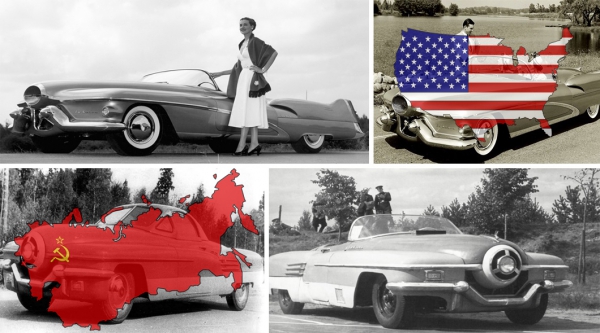
A fact not widely known, but after the beginning of the Cold war in the early 1950s, in a very short period of time the then two Superpowers, the USSR and the USA, chasing each other not only about who is more and better will make weapons or build more military bases, the battle was on in all directions, including in the national economy. One of the areas that became the automotive industry, which is the first in the US and then in the Soviet Union drew attention to the huge scale cars or rather the concepts and prototypes for serial machine instance.
Before the start of the space race, in which our country brilliantly showed the weight of a talent in creating technologically complex devices, engineers and designers worked on more mundane works of technical art, panoramic windshields, large steering wheels and futuristic for the time design. We meet the first two warriors of the Cold war.
United States of America were the sole creators of the idea conceptcars when, in 1938, was presented the first prototype of the future Creator of which was Harley Earl, the name of the concept was simple – Y-Job. The war began and prototypes for some time was forgotten, was not up to them. After the victory of the untouched troubles of the great War the US industry began to catch up, American automakers with new forces moved into the civil focus and the GM was ready to surprise the world.
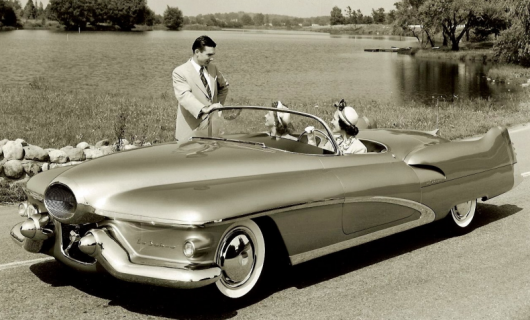
They succeeded, GM showed in 1951 another concept Harley Earl, the LeSabre model. As Y-Job, the model was built on an existing GM chassis, but had an absolutely amazing body, which eventually formed the basis of the style GM cars for the next decade.
The design was obviously taken from the aircraft industry, with “tidy” in the style of aircraft instruments and the front part is borrowed the design of a jet engine.
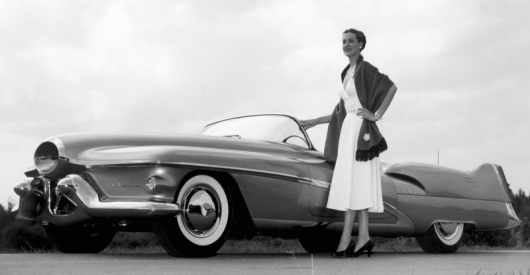
But the main “chip” of this concept-was that he was a great experimental base, which worked out latest at the time the materials and technology, such as an aluminum body (some sources say even about the use of the alloy of aluminum and magnesium) and panoramic windscreen, the first of its kind, has become a real headache in production for companies engaged in the creation of glass – Lilley-Owens-Ford.
On this side of the ocean later also started work, started to do first in the Soviet Union concept cars. The manufacturer of this car has become the most experienced in the creation of the preferred car factory – ZIS, which was later renamed to ZIL. Later, this brand began to produce a handsome, large and pretentious limousines is a reflection of the era of great achievements and high flying that we all love and respect.
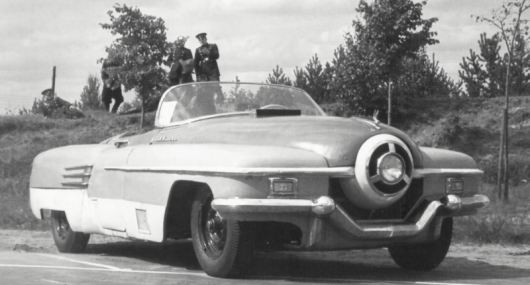
It just so happened with the founding of the Soviet state that the native of their developments in series production for the automotive industry was not very much. Was no exception and the ZIS-112 on the concept of creation seriously influenced by American firstborn LeSabre. But to call the Soviet concept of the identical does not. This kind of model, with its ideology and field of application, which was also applied to the advanced domestic technology in the form in which they can be created in the country, which suffered enormous losses in the war on its territory ended six years ago. So please forgive our engineers and designers (the style of the car was designed by designer Valentin Sprout) of those years some of the flaws in the prototype, like the not quite perfect fit of the parts or some strange shapes and contours of the body. By the way, the complex design of the panoramic windshield was also successfully applied in our first concept of the caret, not giving the American version of the prototype.
First version of concept-domestic (subsequently, he has repeatedly improved) was hard and thin. 2.5 tons and 5.5 metres in length. In-line engine from the limousine ZIS 110 was disproportionately weak, only 140 HP
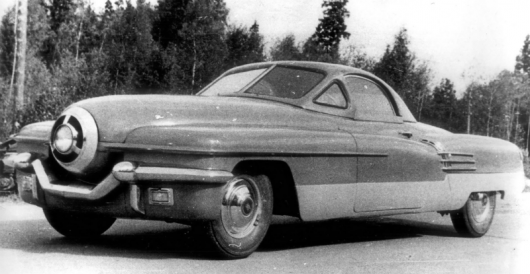
However, this was only the first exhibition sample. In the future, the car went far, having a fiberglass body, a more powerful version of the engines, unusual 180 horsepower engine with a top inlet and bottom outlet valve. Next on the sports Roadster was established forced chetyrekhyadernye model of the old motor from the 110-th limo has a capacity of 170 HP With it sporty (by the time this former concept is already being held NASCAR races in the championship of the USSR) was able to accelerate to 230 km/h.
Improvements and changes, including to increase the capacity and decrease the masses were held until 1957, when it was released the fourth and fifth version of ZIL-ZIL 112/4 and 112/5. Under the hood there is a V8 engine from the limousine ZIL-111 with power from 200 to 220 HP kotoyre were fed four to eight carburetors. The maximum speed of the latest versions have come close to 250 km/h.
Thus, as can be seen, the fate of the Soviet prototype was quite joyful and intense racing competition and honing technologies for race cars is quite a decent life cycle for the machine.
We pay tribute and engine foreign prototype LeSabre, this piece of metal is clearly worth it. Forced V8, possessed at the time fantastically innovative technology.
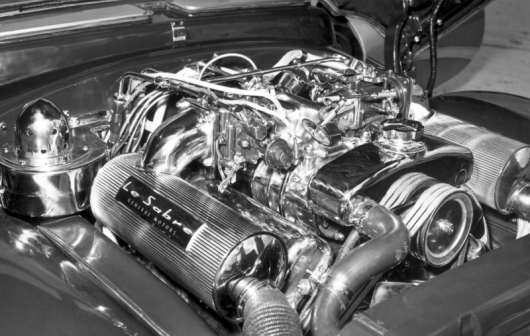
It worked on a rather unusual scheme. Two carburetor fed fuel system single carb prepared the air-petrol mixture, the motor on it was working normally one second carburetor was added methanol to the mix to boost horsepower under hard acceleration!
To further increase power, the engine (which used a cast aluminum hemispherical cylinder head) had the supercharger vdowave 18.2 psi in the cylinders. The result was stunning – 335 horsepower and 516 Nm of torque!
Also take a look at the elegant look of this miracle of technology. Before beauty hats off!
Unlike the ZIL-112, LeSabre was the car for every day on which Harley Earl had rambled on for over 40,000 miles and even managed to borrow a concept for personal use NATO commander in Paris Dwight Eisenhower.
These are two completely different stories of different cars on both sides of the iron curtain. But in this they seem. Probably, in aspiration to make the world better and smarter.
